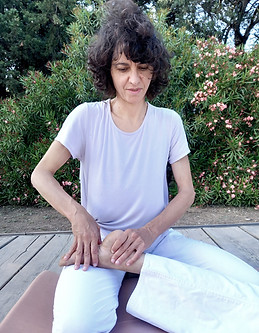I am member of the Hellenic Shiatsu Society. I practice this healing art because I like to feel close to others and I consider Shiatsu a way of communicating at a deep level, through an exchange that lies beyond words, an exchange that is, above all, the joy of touch, for for those who receive it and for those who give it.
I have been practicing Aikido (Japanese martial art of defense) and Butoh (performance art, of Japanese origin) for several years, two disciplines that opened the way for me to approach Shiatsu, through its philosophical and methodological affinity.
Active approach and work through Hara are common elements in these three branches.
Ki (or Qi), which we find in the ideogram of the word Aikido, subtle energy, is a concept that exists in various oriental cultural traditions, according to which it is considered a universal energy that permeates the entire universe and is used for physical, mental and mental well-being and martial arts.
Hara in Japanese means belly. Between the navel and the pubic bone, you find a very important energy point called Tanden (Dantien in Chinese). Tanden is considered the center of gravity of the human body, the origin and center of physical strength but also the essence of vital energy, for this reason in oriental martial arts, in Zen practice, in everyday life, it assumes a very important role.
The Shiatsu healer who works with Hara gains greater sensitivity to perception and greater depth to touch. Consequently, the benefits will be greater.
In both Shiatsu and Aikido (and Eastern martial arts), it is very important to have a deep personal preparation through physical exercises, breathing, meditation and Hara work. It is not just about applying a technique, but each movement and technique fully engages both our body and our Ki. Both (body and Ki) must be in harmony with the person we come into contact with, our receiver (in the case of Shiatsu) or our partner (in the case of Aikido).

